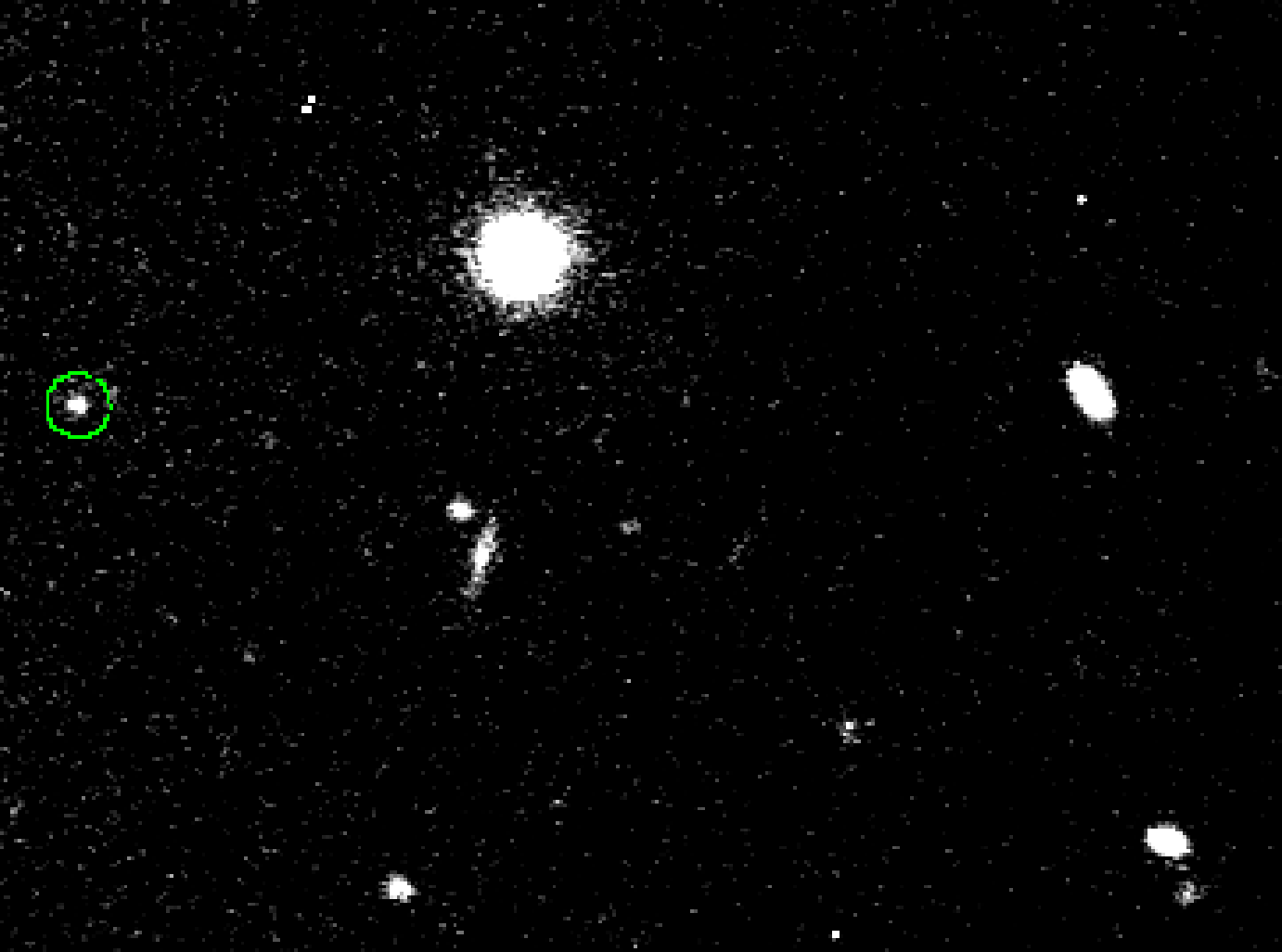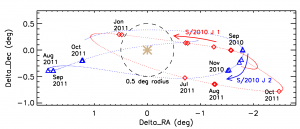
S/2010 J 1 in motion Sept. 8, 2010. Animation is sped up by a factor of 2000. The actual time between each image in the animation is roughly 38 minutes. (Photo:Canada-France-Hawaii Telescope)
Astronomers have found that one of two recently-discovered moons of Jupiter is just two kilometers in diameter and may be the smallest of Jupiter’s 67 satellites.
Back in September 2010, scientists discovered two unknown distant satellites of Jupiter while conducting routine tracking observations of the planet’s previously identified moons.
To confirm that these were indeed new satellites of Jupiter, and not asteroids, the scientists re-observed them several more times during the autumn of 2010.
The International Astronomical Union’s Minor Planet Center designated the two new moons as S/2010 J 1 and S/2010 J 2.
S/2010 J 1 was discovered in September 2010 from images taken with the Palomar Observatory’s 200-inch Hale Telescope. At its furthest, this moon is about 30,774,922 kilometers from Jupiter.
The second moon, S/2010 J 2, about 26,541,445 kilometers from the giant planet, was discovered the same month on images taken with the MegaCam mosaic CCD camera by the 3.6m Canada-France-Hawaii telescope (CFHT). After checking observational data, astronomers also later found that the satellite was weakly visible, on Sept 7, 2010, at the Palomar Observatory.
It’s interesting to note that the moon that would come to be called S/2010 J 1, was first detected back in 2003, but was never classified as a satellite because it couldn’t be found in required follow-up observations.
The astronomers say the size of the two moons can be estimated on factors that are based on their brightness. S/2010 J 1 is estimated to be around three kilometers in diameter. S/2010 J 1, the faintest and probably smallest Jovian moon, has been estimated to be about two kilometers in diameter.

Red diamonds show the 2010-11 observed locations of S/2010 J 1, while blue triangles show the locations of S/2010 J 2. The predicted positions of the satellites for the best fit orbits from JPL are plotted at 48-hour intervals, shown by the red and blue dots for S/2010 J 1 and S/2010 J 2, respectively (Courtesy: Mike Alexandersen)
S/2010 J 1 and S/2010 J 2 are designated as irregular satellites, or provisional moons, and are not given actual names by the International Astronomy Union (IAU) because their discoveries have not been confirmed.
Moons such as the S/2010 J 1 and S/2010 J 2 have been found to be clustered in families of other satellites with similar colors and orbits. Scientists believe these families may have formed as a result of ancient collisions with comets or asteroids with former larger moons.
S/2010 J 1 appears to belong to the Carme group, or family, while S/2010 J 2 appears to belong to the Ananke group.





















Comments are closed.